Consumers expect their food and beverage to look the same as advertised. However, instead of “What You See Is What You Get”, consumers often feel cheated by the final product. McDonald’s is a classic example where its hamburgers look extremely different than they do in promotional images.
The reason: multi-billion-dollar fast food restaurants engage food stylists, image specialists, photographers to create those mouth-watering restaurant ads. Equipments ranging from blowtorches, glue, tweezers, toothpicks, scissors, tape, pins, oil, glycerine and even paint were used to manipulate and enhance food during photo shootings.
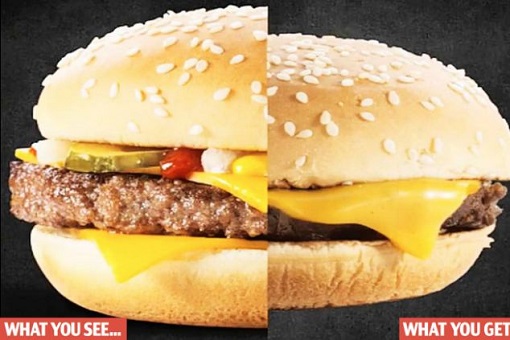
You may not know this but the food in the photos isn’t even fully cooked. For example, if the beef burger is fully cooked, the meat tends to shrink; therefore the size of the burger cannot be maintained. Likewise, cooked vegetables would wilt. It’s just like your wedding photos which look very different from yourself without the 5-inch of make-up (*grin*).
Such marketing and commercial gimmick doesn’t happen to hamburger, fried chicken, donut, french fries but also to drinks. In April, an Illinois woman has filed suit against Starbucks, claiming that the coffee chain is “under-filling” its cold beverages, cheating customers and serving drinks that contain less coffee than advertised.
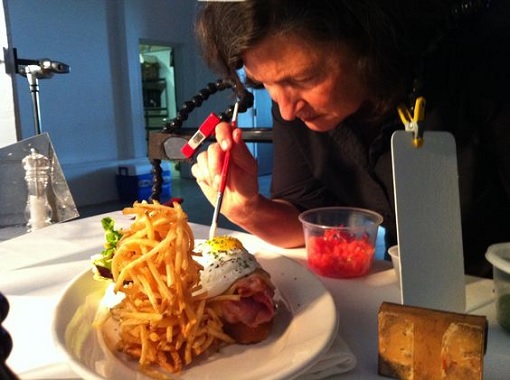
In her class-action lawsuit, plaintiff Stacy Pincus, argued – “Starbucks is misleading customers who expect to receive the advertised amount of fluid ounces. For example, if a gallon of gas is advertised as costing three dollars, and a customer pays three dollars and pumps gas, that customer is expecting to receive a gallon of gas – not approximately half a gallon.”
In another lawsuit filed earlier in March by Siera Strumlauf and Benjamin Robles, Starbucks was accused of chronically under-fills its latte cups because of a “standardized recipe” instituted in 2009 that allegedly saves the company money on milk. As a result, the consumer is served 25% less of the beverage than advertised.
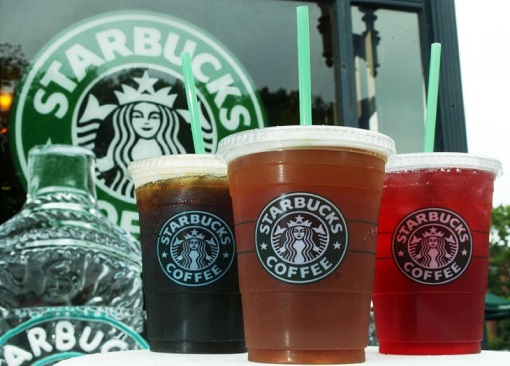
Well, if you’re thinking of seeking US$5 million like Stacy Pincus over the amount of ice Starbucks puts in its iced beverages, you must prepare to not only lose the case but probably be ridiculed by the court. U.S. District Judge Percy Anderson has thrown out a similar lawsuit filed by another Starbucks consumer identified as Alexander Forouzesh.
The lawsuit, filed in Los Angeles federal court in June, alleged that the listed sizes of beverages conceal how much space in the cup is taken up by ice cubes, as opposed to coffee and tea – “Put another way, when a Starbucks employee fills a Venti Cold Drink cup to the top black line, they are only pouring about 14 fluid ounces of Cold Drink into the cup, not 24 fluid ounces.”
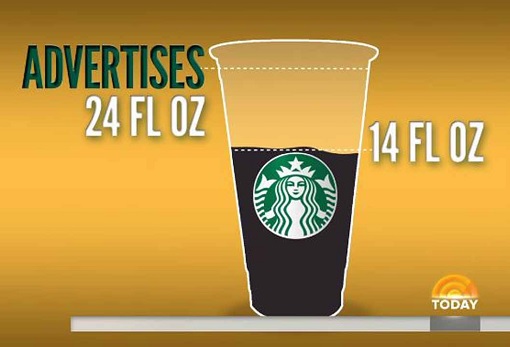
“If children have figured out that including ice in a cold beverage decreases the amount of liquid they will receive, the court has no difficulty concluding that a reasonable consumer would not be deceived into thinking that when they order an iced tea, that the drink they receive will include both ice and tea and that for a given size cup, some portion of the drink will be ice rather than whatever liquid beverage the consumer ordered,” – said Judge Anderson.
The judge also pointed out that Starbucks uses clear cups for cold drinks, making it easy for customers to see how much ice they are getting. Delivering his verdict, Judge Percy Anderson also said Starbucks never explicitly states on menus or signs that a given drink size contains a specified amount of liquid.
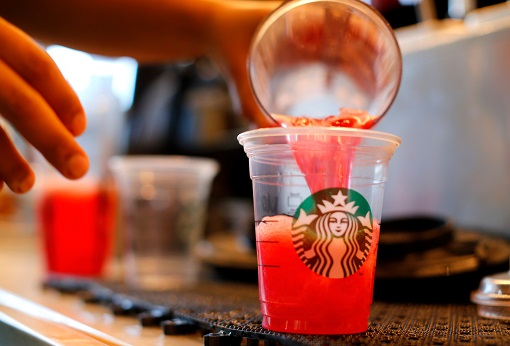
In statements to the media, Starbucks said its baristas will remake a beverage if a customer is dissatisfied with the preparation. Plaintiff Alexander Forouzesh, a Los Angeles resident, however was disappointed – “It’s disappointing to see that the judge didn’t recognize the viability of the claims and the merits of the case.”
Other Articles That May Interest You …
- Leo DiCaprio Could Be In Trouble – For Accepting Gifts Paid With Stolen Money
- Congrats Najib, Your Boy Has Just Proven Your Family Has Everything To Hide
- This Country Is So Screwed Up That 123,000 People Travel 10-Hour To Buy Food
- Take A Look At 50 Corporations’ Amazing First & Present Logos
- Fake Eggs Is Not Urban Legend – Here’s How To Make Them
- There’s A New Luxury Bus Services On The Block, With Starbucks Feel
- Here Comes Wireless Charging To Starbucks UK, And Soon Europe & Asia
- Starbucks Reserve Roastery – An Awesome & Cool Coffee Emporium (Photos)

|
|
August 25th, 2016 by financetwitter
|


|

|

|

|

|

|




























Comments
Add your comment now.
Leave a Reply